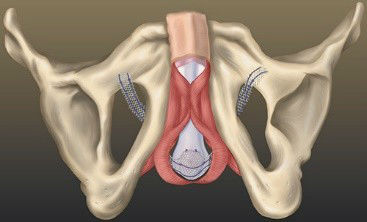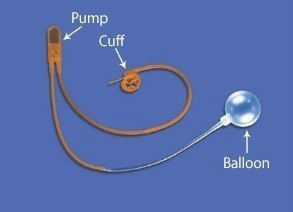Incontinence
A/Prof Katz is a high volume male incontinence surgeon. He has a vast experience with treating men who leak urine after prostate cancer treatment.
Urinary incontinence is loss of normal control of the bladder and involuntary loss of urine.
Individuals with urinary incontinence may experience strong, sudden, urgent and uncontrollable need to urinate, frequent urination and also involuntary loss of urine.
Physiology of normal bladder filling
Normal bladder filling depends on unique elastic properties of the bladder wall that allow it to store urine at low pressure.
Urinary Incontinence may be caused by any of these factors:
- Weak bladder muscles
- Overactive bladder muscle
- Certain prostate conditions
- Urinary tract infection
- Neurological disorders
Urinary incontinence can be categorized into five basic types depending on the symptoms:
- Stress Incontinence
- Urge Incontinence
- Overflow Incontinence
- Mixed Incontinence
Stress Incontinence : Involuntary leakage of urine with effort or exertion, coughing or sneezing.
Urge Incontinence : Involuntary leakage of urine preceded by urgency, which is defined as a strong desire to void that is difficult to defer.
Sexual incontinence : Occasionally after surgery such as radical prostatectomy patients can leak urine during sex. This can occur during arousal, intercourse or with orgasm.
Overflow Incontinence : Involuntary leakage of urine because of an over full bladder
Functional Incontinence : This refers to urine loss resulting from inability to get to a toilet.
Mixed Incontinence : It is usually the occurrence of stress and urge incontinence together.
Symptoms remain the mainstay of diagnosis and you may be ordered additional tests to identify and confirm the cause for incontinence. These tests include bladder stress test, urine analysis and urine culture, ultrasound diagnosis, cytoscopy and urodynamics.
Treatment
Treatment depends on the cause and severity of incontinence. Treatment options for male incontinence include medications, behavioural therapy like bladder training and Kegel exercises, surgery, or a combination of these therapies.
Options for men who have had prostate cancer treatment and have incontinence.
Kegel exercises
Exercising the pelvic floor muscles is an important way to improve your bladder control. When done correctly they can build up and strengthen the muscles that help you hold urine. The pelvic floor is made up of muscles stretched like a hammock from the pubic bone in the front through to the bottom of the backbone. These firm supportive muscles help to hold the bladder and bowel in place and also function to close the bladder outlet and the back passage. Pelvic floor exercises strengthen the muscles that support the pelvic contents and prevent the escape of wind, faeces or urine. Stronger muscles can also enhance sexual satisfaction for both partners.
Kegel exercises generally only help men who have quite mild incontinence. However, men who have more severe incontinence of at least one to 2 pads a day or even more, adrenal generally give these men the best chance of becoming dry during their incontinence
Surgical options for male incontinence
Most incontinence can be helped or even cured by a simple sling procedure. Even patients with heavy incontinence up to several pads per day can be helped by a sling procedure.
While some surgeons, only do one type of sling procedure, A/Prof Katz has experience with inserting the 2 most common types of Slings which are both clinically proven to be safe and effective.
He will discuss with you which one he feels is best suited to your particular case.
ATOMS SLING:
This is 1 of the newest slings on the market and A/Prof Katz has had a lot of success treating patients with this particular sling even with patients who have quite heavy incontinence.
For information on The ATOMS Sling System click here
For information on The AdVance Male Sling System Click here

Artificial urinary sphincter : This is the gold standard treatment for severe stress incontinence (3 or more pads per day). It is an implantable device that helps keep the urethra closed until you’re ready to urinate. It has a very high success rate and usually only requires an overnight stay in hospital.
The artificial sphincter consists of 3 parts:
- Cuff: Controls urine flow through the urethra
- Balloon: Regulates pressure in the cuff
- Pump: Inflates cuff

The AMS 800 Urinary control system has yielded clinically proven results over a vast period of time. For more information, please Click here.
Urge Incontinence: For urge incontinence which is refractory to medical treatments, injecting specialised medication directly into the bladder can be beneficial. This minimally invasive procedure is undertaken as a day case.
 Minimally Invasive Prostate Surgery
Minimally Invasive Prostate Surgery Penile Implant Surgery
Penile Implant Surgery Kidney Stones
Kidney Stones Male Fertility Check-Up
Male Fertility Check-Up Microsurgery for Male infertility and Vasectomy Reversal
Microsurgery for Male infertility and Vasectomy Reversal Incontinence
Incontinence Erectile Dysfunction
Erectile Dysfunction General Urological Conditions
General Urological Conditions Peyronie’s Disease
Peyronie’s Disease Penile Duplex Doppler Ultrasound
Penile Duplex Doppler Ultrasound Penile Rehabilitation
Penile Rehabilitation Testosterone Therapies
Testosterone Therapies Premature Ejaculation
Premature Ejaculation









 A/Prof Darren Katz
A/Prof Darren Katz Dr. Deanne Soares
Dr. Deanne Soares Dr. Vincent Chan
Dr. Vincent Chan Dr. Glenn Duns
Dr. Glenn Duns Kath Schubach
Kath Schubach






